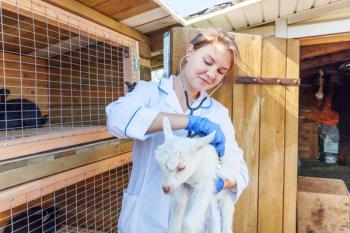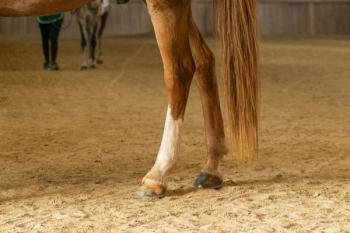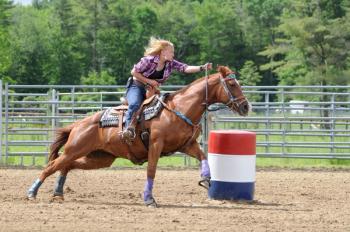
Picking a winner: Choosing the best horses to represent the USA in the World Equestrian Games
When a national medal is on the line, the Lameness Locator can help equestrian teams select their athletes with confidence.
The World Equestrian Games endurance competition will be held on August 28 in Normandy, France, near the Mont Saint-Michel castle.Horses trying out for the USA World Equestrian Games endurance team have been through a lot-hundreds of conditioning and training rides, constant travel, numerous examinations and procedures, one grueling trial where weather forced crucial last-minute changes in routine-all things that would slowly begin to wear on any athlete trying to stay fit and healthy. Yet the horses remain largely sound, and the selectors have difficult choices to make. How do you chose the soundest of a group of sound horses? Or better still, how do you identify subclinical problems in horses when you cannot detect any problems visually? Is there a low-level musculoskeletal concern that will be exacerbated by the pounding of a hundred-mile race, taking its toll and potentially derailing a nation's medal hopes? This is one situation where the Lameness Locator may potentially help.
Of course, selections for the USA Endurance Team are made based on a large number of factors. The Lameness Locator is being used on the horses vying for selection for the 2014 team as a means of gathering additional information and as an experiment in how to most accurately and successfully choose a winning team. No horses were either selected or dismissed from contention based on data from the Lameness Locator. Numerous Locator evaluations were done, however, and sometimes, subtle problems were identified and horses referred for more extensive diagnostic workups and eventual treatment based on the Locator analysis.
Evaluating horses in the process of trying to make an equestrian team for international competition is similar to evaluating professional athletes during a long, grinding baseball, football or hockey season. Everyone is still playing and performing at a high level but almost everyone has some subtle issues. Identifying those subtle, usually subclinical issues in the elite equine performance athlete and helping address them has been the main function of the Lameness Locator. And when the World Equestrian Games are finished, win or lose, there will be a retrospective look to see how accurate and helpful this gait analysis data was. In fact, a Lameness Locator will be travelling to France with the team to provide information as to the horses' post-travel condition and soundness in training on the beaches of Normandy leading up to the competition on August 28.
Team veterinarian Dr. Dwight Hooton and team chef Emmett Ross have made it a priority to “double down” on lameness and to send the soundest team possible to represent the United States. In 100 miles of racing there is always the possibility of a lost shoe, a misstep or fall, and any number of things that may be outside the control of the veterinarians or team organizers. Utilizing the Lameness Locator is, however, one additional step to provide more information and to better control as many factors as possible. The success of this equipment and this experiment in using more objective scientific analysis when evaluating horses for international team competition will ultimately be determined on the podium in France. This approach would represent a fairly dramatic shift from the more heavily weighted subjective evaluation process that has been the norm for team selection in the past. If successful, you may see more U.S. equestrian teams and teams from many other countries utilizing advanced science and mathematical analysis to pick a winner.
Newsletter
From exam room tips to practice management insights, get trusted veterinary news delivered straight to your inbox—subscribe to dvm360.




